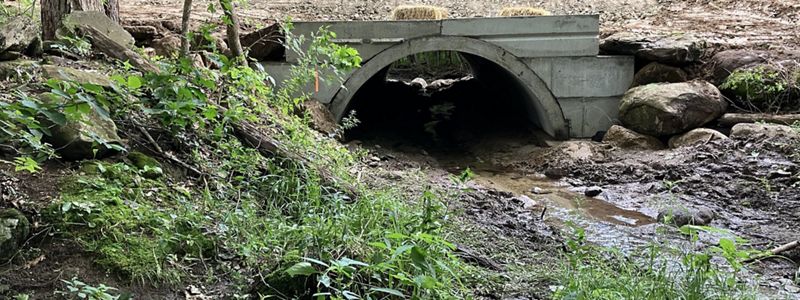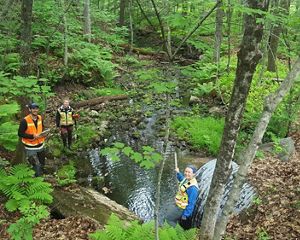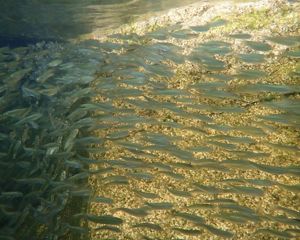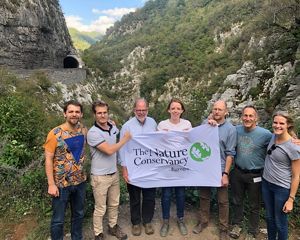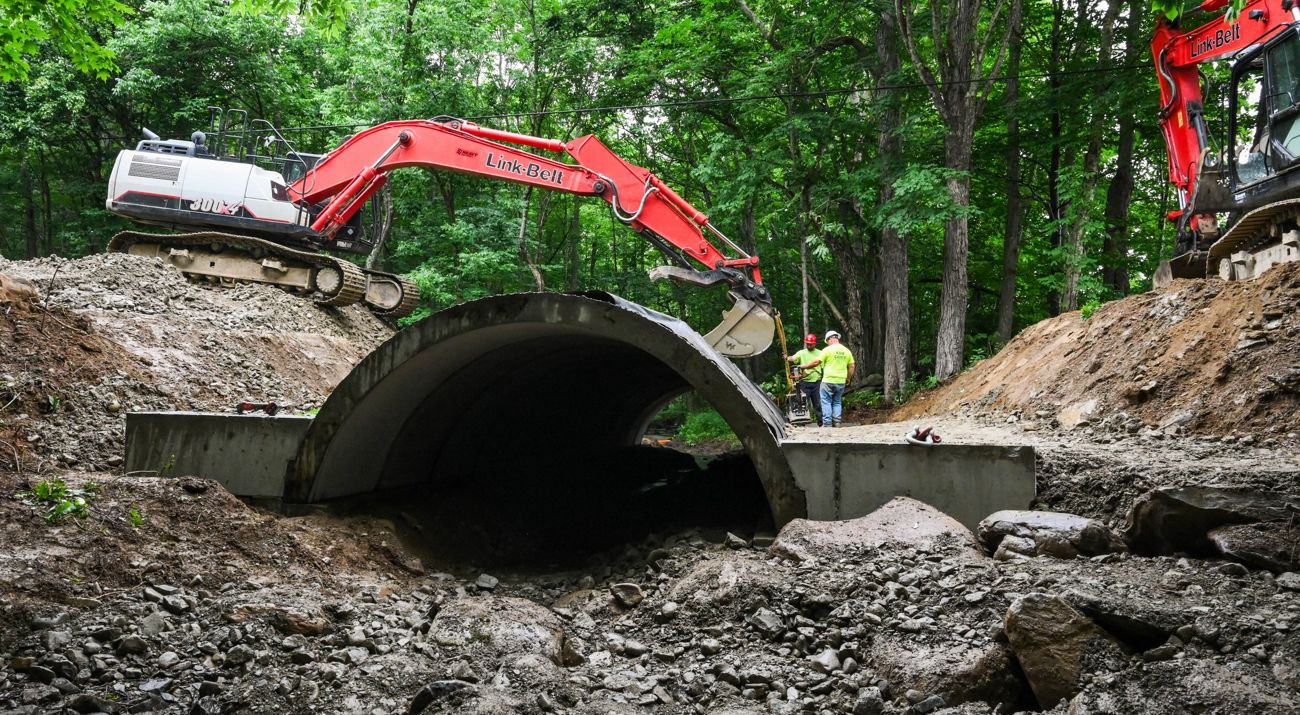
A Stream Set Free
How Mainers are building resilient infrastructure designed for fish and floods.
In a small town nestled in the heart of Penobscot County, something remarkable happened on a quiet, gravel road that winds through the woods: a stream was set free.
The transformation happened in the summer of 2024. For years, an aging, undersized culvert in Dixmont, Maine had been causing problems on an unnamed tributary to Olney Brook. It blocked fish from reaching upstream habitat, eroded the road during heavy rains and disrupted the natural flow of the stream. But thanks to a determined network of partners with a shared vision for climate resilience, that culvert has been replaced with a structure that’s better for fish, better for people and built to last.
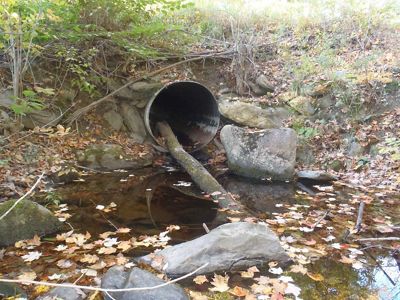
Troubled Waters
The old culvert—just 42 inches in diameter—was perched above the streambed, creating a barrier for fish like Eastern brook trout and Atlantic salmon. It also couldn’t handle the increasingly intense rainstorms hitting Maine. Floodwaters regularly overtopped the road, washing gravel and sediment into the stream and damaging the surrounding habitat.
The stream is designated as Critical Habitat for the federally endangered Atlantic salmon. It’s part of the Marsh Stream watershed, a high-priority area for restoration identified by The Nature Conservancy, the Maine Department of Inland Fisheries & Wildlife (MDIFW) and NOAA Fisheries. In 2019, TNC staff reached out to the Town of Dixmont with an offer: to collaborate on replacing the failing culvert with a new, climate-ready crossing. The Dixmont Conservation Commission (DCC) took on the challenge.
The road to restoration wasn’t easy. After securing an initial grant from the Maine Department of Environmental Protection, the town faced setbacks: additional funding didn’t come through and deadlines slipped past. But the DCC didn’t give up. They reapplied, regrouped, and eventually secured over $175,000 in new funding from state and nonprofit sources.
Building for the Future
With the funding finally in place, the town hired Dirigo Bridge Company to install a new 10½-foot-wide open-bottom arch culvert designed to let the stream flow naturally and give fish a clear path upstream. The new structure follows Stream Smart principles: it spans 120% of the full width of the stream, aligns with the natural channel, and includes native streambed materials and wildlife travel lanes.
Before construction began, MDIFW biologists and DCC members carefully relocated fish and other aquatic life from the project area. Among them were young-of-the-year Brook Trout: proof that the stream was still a vital breeding ground.
By early July, the transformation was complete. The new crossing reconnected over two miles of upstream habitat, eliminated a chronic flooding problem and restored the stream’s natural flow.
Resilience in Action
Just a few months later, a powerful December storm put the new structure to the test. With multiple inches of rain and a foot of snow melting in less than 24 hours, the stream surged. But the new culvert passed the floodwaters without damage—no washouts, no erosion, no emergency repairs.
That’s the power of nature-based infrastructure. It’s not just about fish passage or habitat: it’s about protecting roads, saving taxpayer dollars and preparing communities for the realities of a changing climate.
“We’re seeing more frequent and intense storms, and that’s putting a lot of pressure on our infrastructure,” says Jeremy Bell, TNC Maine’s Climate Adaptation Program Director. “Replacing undersized culverts with Stream Smart crossings is one of the most cost-effective ways to reduce flood risk while also restoring habitat.”
Quote: Jeremy Bell
Replacing undersized culverts with Stream Smart crossings is one of the most cost-effective ways to reduce flood risk while also restoring habitat.

A Statewide Challenge
The picture is bigger than one small town. Across Maine, thousands of road-stream crossings are aging, undersized and vulnerable to failure. Many were never designed to handle today’s storm volumes, let alone the projected increases in precipitation due to climate change. When these crossings fail, the impacts ripple outward into damaged roads, isolated communities and degraded water quality and habitat.
TNC and its partners are working to turn these vulnerabilities into opportunities. By upgrading crossings to meet Stream Smart standards, communities can improve public safety, protect infrastructure and reconnect vital aquatic ecosystems.
A Model for Maine
Dixmont’s story is one of persistence and the power of local action. It shows what’s possible when communities, conservationists and agencies all work together toward a common goal. And it’s a reminder that even small towns can lead the way in building a more resilient Maine.
As the stream flows freely once again, brook trout return to spawn, and the road stands strong against the next storm, Dixmont’s success offers hope—and a blueprint—for communities across the state. TNC in Maine's team of scientists and geospatial mapping specialists have worked together with partners to develop a suite of Maine Mapping Tools, which can help communities identify places where improved infrastructure is most needed.
The storms aren’t slowing down. But with smart choices and strong partnerships, we can rise to meet them—one stream, one crossing, one community at a time.
We Can’t Save Nature Without You
Sign up to receive monthly conservation news and updates from Maine. Get a preview of Maine's Nature News email.
